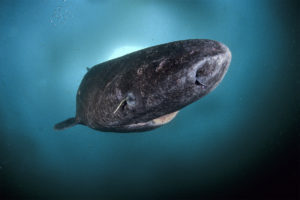
Is 100 years old about to be the new 60? The folks at Peter Diamandis’ Human Longevity, Inc. think so. They’ve cited these top five stories from 2016 on longevity research that suggest that the debate on a natural life span limit is far from over.
500-Year-Old Shark Discovered: A Greenland shark that could have been over 500 years old was discovered this year, making the species the longest-lived vertebrate in the world.

photo source
Genetically Reversing Aging: With an experiment that replicated stem cell-like conditions, Salk Institute researchers made human skin cells in a dish look and behave young again, and mice with premature aging disease were rejuvenated with a 30% increase in lifespan. The Salk Institute expects to see this work in human trials in less than 10 years.
25% Life Extension Based on Removal of Senescent Cells: Published in the medical journal Nature, cell biologists Darren Baker and Jan van Deursen have found that systematically removing a category of living, stagnant cells can extend the life of mice by 25 percent.

Photo Source
Funding for Anti-Aging Startups: Jeff Bezos and the Mayo Clinic-backed Anti-Aging Startup Unity Biotechnology with $116 million. The company will focus on medicines to slow the effects of age-related diseases by removing senescent cells (as mentioned in the article above).

Photo Source
Young Blood Experiments Show Promising Results for Longevity: Sakura Minami and her colleagues at Alkahest, a company specializing in blood-derived therapies for neurodegenerative diseases, have found that simply injecting older mice with the plasma of young humans twice a week improved the mice’s cognitive functions as well as their physical performance. This practice has seen a 30% increase in lifespan, and increase in muscle tissue and cognitive function.

Source
Source: http://diamandis.com/tech-blog
Leave a Reply